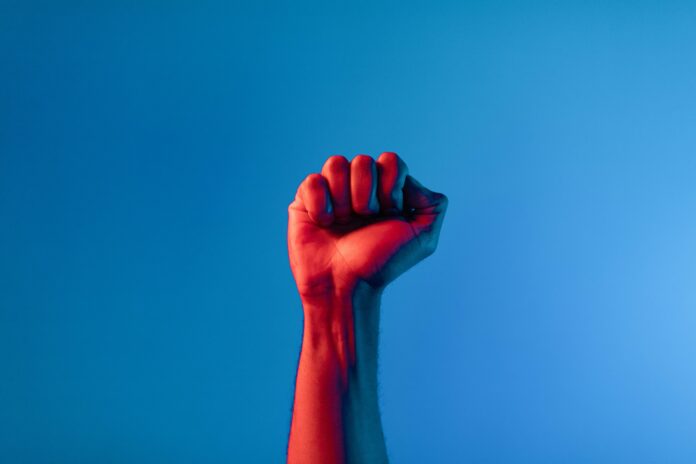The discourse surrounding gender dynamics is fraught with complexities that shape and redefine our understanding of social justice. The Men’s Rights Movement (MRM) emerged as a counter narrative to feminism, asserting that men experience societal disadvantages often overlooked in contemporary discussions. In examining the MRM, it is crucial to delve into its historical roots, its ideological underpinnings, and the subsequent ramifications for gender equality as a whole.
To fully comprehend the evolution of the MRM, we must first acknowledge the historical context from which it sprung. The late 20th century witnessed the emergence of various women’s movements advocating for equal rights and opportunities. As women fought against systemic injustices related to employment, education, and reproductive rights, some men began to perceive these advancements as threats to their own societal status. This perceived encroachment led to a reactionary stance, birthing what we know today as the Men’s Rights Movement.
Understanding the motivations and claims within the MRM requires a nuanced view of the grievances articulated by its proponents. Advocates assert that men face various challenges, including biased family court rulings, mental health stigma, and societal expectations of masculinity. Central to their argument is the assertion that men are often vilified in discussions surrounding gender disparities, echoing sentiments of alienation and defensiveness. Nevertheless, one must question: are these grievances legitimate representations of systemic discrimination, or do they merely reflect a broader cultural discomfort with changing gender norms?
To engage with this dichotomy, one must investigate the ideological substratum of the MRM. Some proponents are well-intentioned individuals seeking recognition for genuine issues, while others delve into more controversial territories, such as misogyny and anti-feminist rhetoric. This divergence within the movement raises significant concerns about its trajectory. Is the MRM truly about advocating for men’s rights, or is it a vehicle for perpetuating retrogressive notions of gender roles?
Exploring the Intersection: Masculinities and Power Dynamics
The conversation surrounding the MRM inevitably leads to a critical examination of masculinity itself. The traditional constructs of masculinity, which often emphasize stoicism, aggression, and dominance, contribute to the male experience within societal frameworks. Men are frequently socialized to eschew vulnerability, resulting in detrimental consequences for mental health and interpersonal relationships. The MRM posits that societal expectations impose undue strain on men, hindering their emotional expression and overall well-being, a point that deserves closer scrutiny.
By framing masculinity as a monolithic experience, the MRM fails to acknowledge the diversity within male identities. Factors such as race, class, and sexuality intersect with masculinity, producing varied, often contradictory experiences. For example, men of color may encounter additional layers of oppression that challenge the universality of MRM claims, illuminating the necessity of incorporating an intersectional lens into the analysis. It is vital to ask, how can we create an inclusive dialogue that incorporates the voices of all men while addressing the broader dimensions of gender inequality?
The MRM, in its most constructive form, can serve as a catalyst for conversations about emotional health and dismantling harmful stereotypes. However, such progress necessitates acknowledging the complementary relationship between advocating for men’s rights and fostering feminist objectives. The feminist movement has long sought to liberate individuals from the confines of rigid gender categories, including the pressures placed upon men. A cooperative approach, rather than an adversarial one, may yield more fruitful discussions and ultimately advance gender equity.
Confronting the Darker Aspects of the Movement
While the MRM can initiate valuable discussions on gender norms, it is imperative to recognize and confront its more uncomfortable characteristics. Instances of misogyny within segments of the movement are concerning. This hostility often manifests in blatant anti-feminist tirades or dismissive attitudes towards issues that affect women. This results in a paradox where advocating for men’s rights inadvertently perpetuates discrimination against women, undermining the initial purpose of the movement.
Moreover, the MRM’s vulnerability to extremist ideologies invites scrutiny. Certain factions within the movement may align themselves with violent extremism, viewing their cause through a misanthropic lens that engenders a sense of victimhood rather than empowerment. This troubling association must be addressed explicitly, as it poses a significant risk to both the integrity of the movement and broader societal discourse around gender justice. Therefore, one must engage critically with MRM narratives, challenging notions that place men’s rights at odds with women’s progress.
The Path Forward: A Collective Pursuit of Equity
To forge a productive path forward, it is essential to cultivate an environment where men’s issues can be discussed without diminishing women’s struggles. Recognizing that gender inequality constitutes a multidimensional challenge rather than a zero-sum game enables a broader coalition aimed at achieving equity for all. Collaborative initiatives targeting societal expectations tied to masculinity can simultaneously uplift male experiences while honoring the struggles women face.
Countrywide campaigns focusing on mental health awareness, positive masculinity, and deconstructing toxic gender norms can serve as viable starting points. Educational programs aimed at young boys promoting empathy, emotional literacy, and respect for all genders may contribute to reshaping societal expectations of masculinity. Emphasizing respect as a fundamental tenet of all human interactions will pave the way for a more inclusive discourse surrounding gender rights.
In conclusion, while the Men’s Rights Movement raises valid concerns worthy of examination, it cannot exist in isolation from the broader struggles against patriarchy and gender discrimination. By engaging critically with the MRM and challenging its more contentious threads, we can foster a more inclusive dialogue that embraces the multiplicity of gender experiences. The quest for equity is not a competition but rather a collective endeavor—one that invites all voices to be heard, respected, and celebrated as we navigate the complexities of gender rights in contemporary society.





























